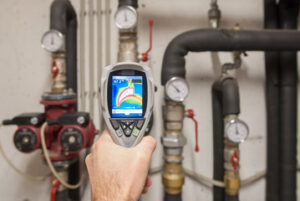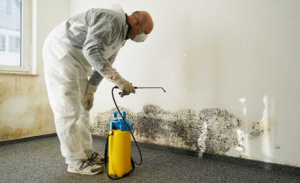Formazione Aziendale are a powerful tool to help employees master new skills in today’s rapidly changing business environment. These training sessions offer a space for learning that can boost morale, improve teamwork, and foster growth within the company.
A successful workshop should have a clear strategic outcome. It should also be engaging and fun.

Customer Experience Map Workshop
A customer journey map workshop is a great way for teams to collaborate and discuss how they can improve their customers’ experiences with the company. This type of workshop is most effective when it focuses on the personas and goals of the company’s target audience. It’s also a good idea to incorporate empathy-building activities and encourage team members to step into the shoes of their customers. This will help them identify pain points and moments of truth.
Prior to the workshop, it’s important to collect and analyze qualitative and quantitative data on customer behavior. This information should provide a solid foundation for the journey-mapping process. Consider incorporating demographic data, including age, gender, income level, and education. Additionally, consider collecting behavioral data, such as website traffic and engagement with marketing materials.
Once you’ve collected the data, you can begin mapping out your current state and identifying opportunities for improvement. Make sure to prioritize areas that have the biggest impact on both customer satisfaction and business outcomes. Then, develop a clear action plan that includes responsibilities and timelines to ensure that the workshop insights are transformed into concrete initiatives.
Time Management Workshop
Whether employees are working remotely or in-person, time management skills are essential to productive work. A comprehensive time management training program can help employees prioritize tasks, develop a daily schedule, and reduce interruptions. By improving these skills, employees can become more proactive and efficient at work and meet deadlines.
A successful time management workshop should include practical exercises that will allow participants to apply their new skills. These exercises should be tailored to the learning styles of each participant, as well as the context of their work. For example, kinesthetic learners may prefer hands-on activities or role-playing exercises, while auditory learners may benefit from podcasts or recorded lectures.
Lastly, it’s important to provide ongoing support for employees as they work to improve their time management skills. This can be in the form of follow-up training sessions or online resources. For instance, a virtual training platform that offers online courses and self-paced lessons can be an effective way to offer time management workshops for employees who have busy schedules or work remotely.
Digital Marketing Workshop
The digital marketing workshop is a great way to learn about the latest trends and techniques in this field. They are often led by experts in the industry who have a lot of experience working with different technologies and tools. The workshops are also a good opportunity to meet other people in the field and share ideas.
This online workshop helps students to understand the various disciplines of digital marketing, including social media and email marketing. The course includes lectures, exercises, and assignments. It is designed for marketing professionals and business owners who want to improve their performance and achieve their goals.
This online marketing workshop covers the latest digital trends, tactics and best practices to ensure your brand is at the forefront of your customers’ minds. With this comprehensive course, you’ll become a master of SEO, content marketing, social media, and email marketing. In addition, you’ll gain a better understanding of how to use the most advanced analytics and reporting capabilities. It’s an ideal choice for anyone looking to stay competitive in the ever-changing digital landscape.
Employee Onboarding Workshop
Employee onboarding (also known as induction training) is a series of activities that help new employees understand your organization’s processes, values and culture. It also teaches them about their core job duties and any essential procedures that they need to know.
During the onboarding process, it is important to make sure that you aren’t overloading your employees. This includes not only the amount of information that is taught, but also the way that it is delivered. You can do this by offering e-learning that is accessible through a variety of devices, and using shorter, more easily digestible content.
The onboarding process should also involve some kind of follow-up where Human Resources or the employee’s manager meets with them to evaluate how well they are integrating into the team and their role. This is where you can assess if they are hitting their performance metrics and meeting their goals. You can do this at 90 days, six months or even a year. It is up to you to determine the best time for this follow-up.
Diversity & Inclusion Workshop
Due to growing diversity, it’s important for businesses to train their workers on how to work with a diverse workforce. This will help reduce the possibility of misunderstandings or frustrations between workers from different cultures. It will also allow companies to avoid losing valuable talent because of short tenures or an unfavorable reputation. A Diversity & Inclusion workshop can assist in breaking down common stereotypes and encouraging an open-mind towards other cultures.
The CMOE Diversity & Inclusion Essentials workshop is an introductory learning experience for both teams and individual employees. It builds awareness of diversity terminology and concepts so that employees can become agents for change in their organization.
This interactive workshop helps participants understand unconscious bias and its impact on decision-making. They will also learn how to build trust and psychological safety in their workplace, a key ingredient of inclusive leadership. In addition, they will learn about microaggressions and their impact on marginalized groups. The workshop will also equip participants with tools and strategies for addressing these issues.
Musical Collaboration Workshop
Musical collaboration is a powerful way to enhance creativity. It can help musicians build their network, grow their fan base, and improve their business skills.
To ensure a smooth cooperation, musicians should create clear processes and establish agreements. They should also create reasonable deadlines and milestones for their projects. This will guarantee that development proceeds promptly and enables team members to stay concentrated.
Musicians should also use internet platforms to locate potential collaborators for their projects. These websites offer a diverse pool of artists with different skill sets and musical backgrounds. Taking advantage of these online resources may allow musicians to explore new genres or expand their creative boundaries.
Musical theatre workshops require the ensemble’s reliance on one another, similar to teams in a corporate setting. Moreover, productive groups are able to take strategic pauses in their rehearsal process to reflect on performance metrics and harness collective strengths. Such strategies are applicable to all types of teams and can increase efficiency. Moreover, they can help improve communication and foster a more harmonious workplace environment.
Strengths Finder Workshop
Strengths-based workshops and learning programs help individuals recognize their natural talents and build a positive workplace environment. These workshops boost morale, enhance productivity, and increase engagement. They are especially effective when paired with ongoing training that builds upon the insights gained during the workshop.
Participants receive individual reports that identify their top strengths, which are then compared to the results of other members of their team. The result is a team strengths grid that highlights how each person’s strengths complement the other’s, leading to increased collaboration and effectiveness. Depending on the workshop’s goals, additional team-based development resources or communication strategies might be provided.
This is an ideal icebreaker for new teams or to revitalize an existing one. It also helps leaders improve their management skills and provide support that empowers their employees to be their best. Ideally, participants leave ready to claim their own unique talents and put their egos aside for the benefit of the team. Ideally, this is an interactive workshop that includes plenty of group discussion and activities.
Inner Child Workshop
There’s a lot that happens in childhood that significantly impacts our lives as adults. Emotionally healing these experiences can help us live more authentically and feel more worthy of love. Whether you’re dealing with anxiety, depression, or other mental health challenges, inner child work can provide a powerful solution.
In this enlightening workshop, John Bradshaw guides participants on a journey of self-discovery or their “child within”. Through a series of lectures, meditations and group exercises, this workshop helps individuals access childhood memories to heal painful wounds from unmet developmental needs. It also helps them identify obstructions in their current life that stem from these past traumas.
This workshop teaches participants how to “reparent” themselves by providing the love and safety they were lacking as children. It also encourages them to talk about their feelings, fears and desires with this younger version of themselves. It can feel awkward and uncomfortable at first, but with practice, it can become a nourishing part of your self-care routine. It’s important to remember that this process can take time and requires patience.








